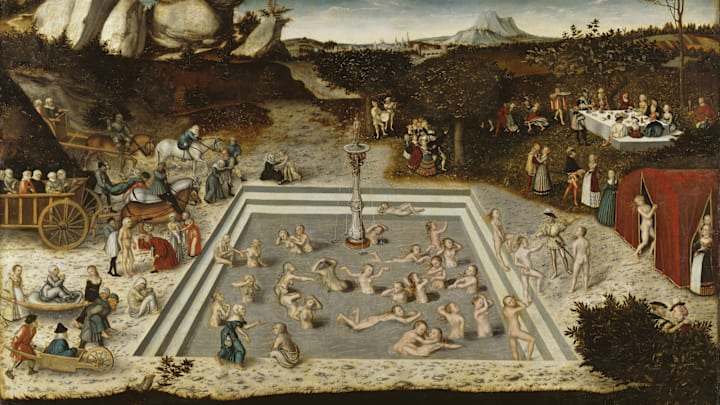The fountain of youth that Ponce de León is said to have searched for 500 years ago could be a radioactive well beneath an abandoned Florida lot. At least that’s what some Punta Gorda locals claim. There, residents of the southwestern Florida city have been drinking the legendary water since the late 19th century.
Back in 1926, the people of Punta Gorda raised money to construct a green-tiled fountain for the aquifer that still stands today. Many people swore by the water’s mystical properties; at the peak of its popularity in the mid-20th century the spigot’s handle was used so often it reportedly needed to be replaced every six months.
The frenzy surrounding the Punta Gorda fountain has since died down, largely thanks to the Clean Water Act of 1972, which requires that all public water sources be tested for a number of contaminants. The Punta Gorda fountain’s tests yielded some alarming results.
The water was shown to contain 9.2 picoCuries of radium-226 isotope per liter, far exceeding the EPA’s recommended radium limit of 5 picoCuries per liter. Over the years, there has been some talk about plugging up the well for good and instead supplying it with city water, but public opposition eventually won out.
Despite the well’s concerning—though not fatal—levels of radiation, people are still placing faith in its life-extending properties. It turns out there could be some science supporting this century-old superstition.
In addition to radium, the fountain’s water was shown to contain high amounts of magnesium, a beneficial mineral that most people are deficient in. The water also contains magnesium sulfate, a.k.a. Epsom salt, a compound frequently added to bath water in order to ease stress and pain.
The fountain may not be as popular as it was in its heyday, but there are still plenty of believers who are not deterred by the “Use Water at Your Own Risk” notice posted beside it. Some visitors show up with large jugs to fill up with water and take home with them. One gentleman was known to use the water to wash his car, while another elderly woman claimed to use it to brew her tea. When asked about the water’s health risks, Punta Gorda resident Donna Sanford told NBC2, “Well, I’m not necessarily glowing.”
The Punta Gorda water spigot isn’t the only Florida landmark that claims to be the original fountain of youth. St. Augustine, the oldest city in America, is home to the Fountain of Youth Archaeological Park, which memorializes the spot where Ponce de León supposedly found the fabled water source. There is no historical or archaeological evidence supporting this, however. There’s also no reason to believe the water from the park’s spring has life-extending properties, but at least it falls within the legal radioactivity limit.
Visitors to the attraction can try the water and judge it for themselves. The Fountain of Youth Archaeological Park offers more activities beyond sipping water; historical exhibits, reenactments, and excavations—not to mention the colorful peacocks that roam the property freely—are all on the calendar at this Sunshine State landmark.
